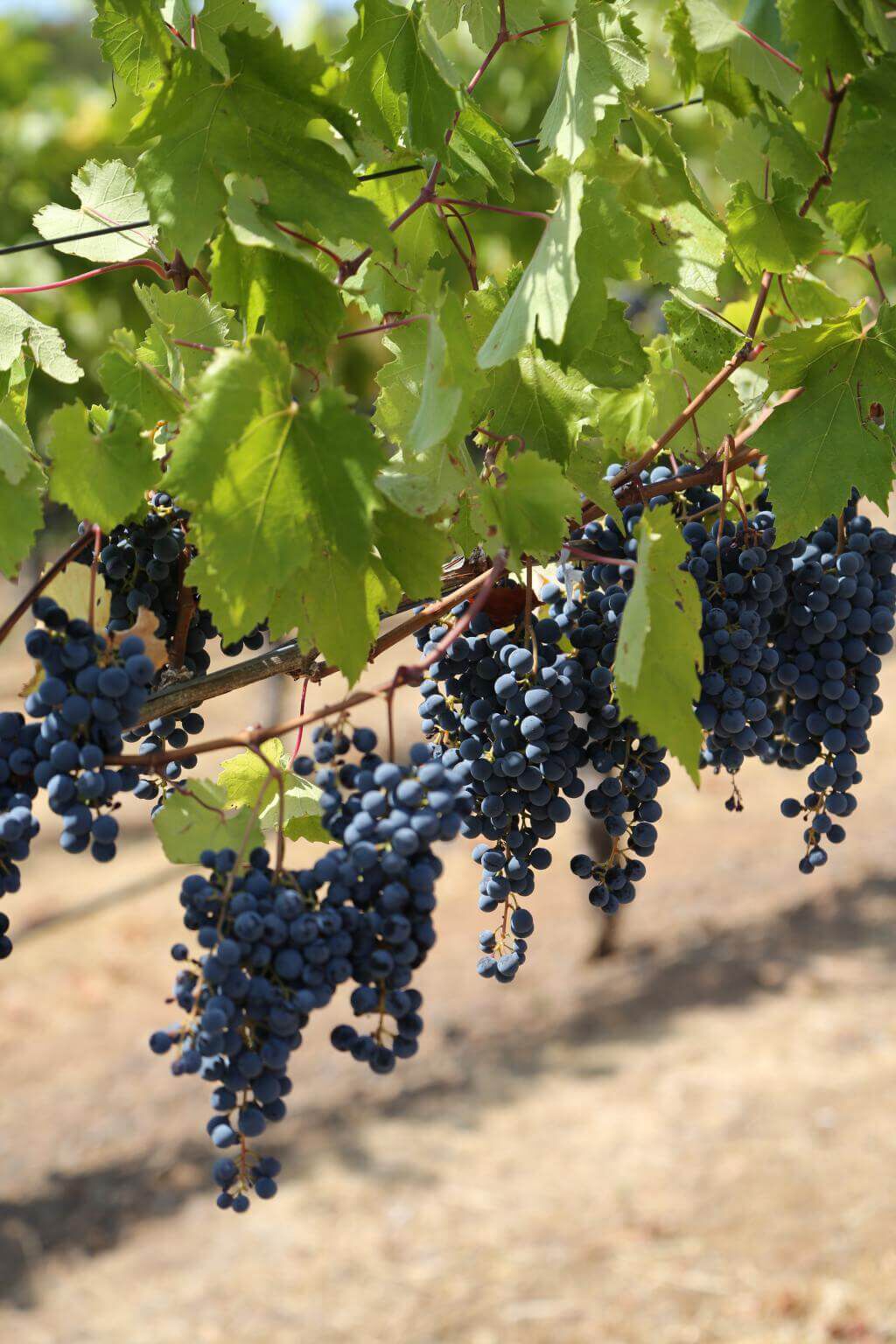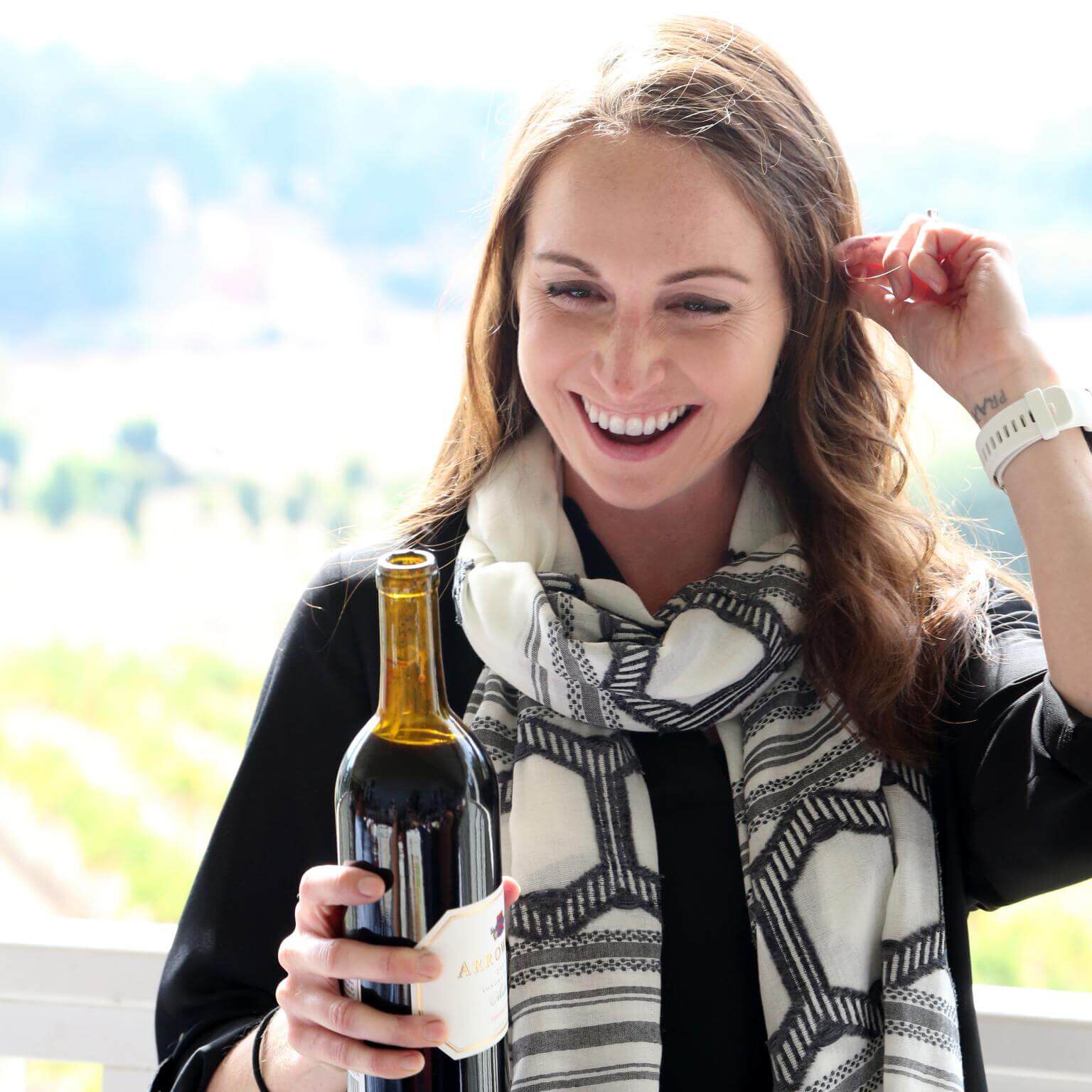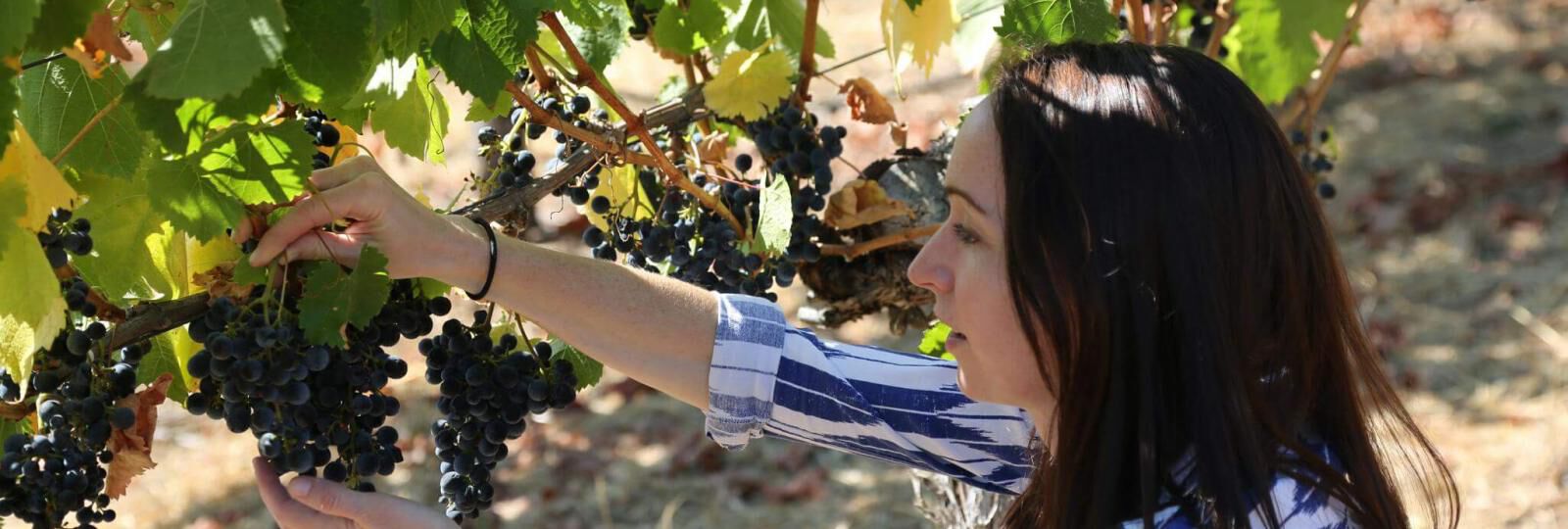ARROWOOD'S WINEMAKER RECAPS THE 2019 HARVEST
Category: Winemaker's Notes
Do you really know what’s inside that bottle of wine you’re enjoying? Beyond fermented grape juice, a bottle of wine requires many human hands, lengthy days and nights, and picking at the right time amid unexpected weather patterns. These are just a few key "ingredients" we might not think about when consuming the nectar of the gods. Arrowood winemaker Kristina Shideler managed to carve time out of her extremely busy harvest schedule to break down her typical 2019 harvest day, which requires a ton of multi-tasking. The level of commitment, knowledge, and skill required of a winemaker may make you savor that glass of vino even more tonight.
A NORMAL 2019 HARVEST DAY
Planning, picking, and processing are a 'round-the-clock endeaver, as can be expected. Kristina admitted, "I don’t keep track of my hours. I’m always on call. I answer texts at 2 am [during harvest]." However, because she has a young family, she does try and limit the amount of time she spends away from her husband and daughter. "A normal day for me to be away from home is 14-15 hours," Kristina said. Much of that involves driving up and down the valley to check on the grapes from various vineyards in person. She explained, "I’m commuting and driving a lot. I make this three hour loop from Alexander Valley to Knights Valley to Sonoma Valley to Carneros."
MORNINGS IN THE VINEYARD, AFTERNOONS IN THE WINERY
Though things may change at a moment's notice, Kristina does try and stick to some semblance of a routine. She starts the day by making her rounds in the vineyards, when the weather is cool, so she can taste test the grapes. She elaborated on the process, "When you taste warm berries, they taste more sugar-y than if it’s cold. And I want to taste at the same time every day, so temperature is the same (no other [variables] influence it)."
By mid-day, she heads south to the winery at Carneros to check on the wine tanks, inspect the fruit that's being delivered, and strategize for the days ahead. She commented, "I taste through all the fermenters [wine tanks], because I have to make decisions. How are we going to pump the [wine] over?" Then there's the planning portion of the afternoon. Kristina added, "I make decisions for that afternoon or night shift and for the following day. That’s when I look at lab data analysis."
Though she tries to plan and prepare as much as possible, there's the inevitable items that require her immediate attention. She articulated, “That’s the typical rhythm of the day, but of course there are things that come up and there is a lot of multitasking and coordination. I’m constantly on the phone with vineyard managers to coordinate picks, and also need to be available at the winery to answer questions or direct traffic. Weather can also throw off my picking plans, and I have to make the best decision for that moment. But that’s also part of the fun and excitement of harvest.”

GRAPE HARVESTS HAVE TO BE PLANNED
Knowing exactly when the grapes are ready requires so many variables. Kristina broke down the biggest contributors, "To be able to project [harvest], I’m looking at lab analysis and trends [for] both sugars and acids. I’m also looking at the weather. I know these vineyards and worked with them several vintages. I track them all season. I know which ones can handle heat or rain if that happens. A lot of it is familiarity with that vineyard and the way it behaves and ripens." When the moment has come for the grapes to be harvested, it's not as immediate as you would think. "For planning purposes, I usually schedule picks 2 to 3 days in advance. It takes time to organize hand labor, tractors, and trucking," she revealed.
THIS YEAR’S WEATHER PATTERNS
Because weather impacts so much of the 2019 harvest, Kristina shared what occurred during this vintage. Winter and spring are all about responding to the amount of rainfall. According to Kristina, because there was a lot of rain this spring, "That gave us a late start on the season. It promoted a lot of vigor in the vineyards, so we removed a lot more green part of the plant — not just leaves but laterals, the secondary shoots that shade the clusters."
Summer and fall, heat and even ripening are of biggest concern. Kristina recapped, "Heat spikes are always a concern in California, and one of them usually defines the harvest. The most notable heat spike this year was during veraison [color change of grape berries] of Cabernet. We were enjoying a moderate summer when there was a period of 4-5 days above 100 degrees and it seemed like versaison happened overnight. I think that really sped things up, and what was expected to be a later harvest actually ended up being earlier than the previous year."
Lastly, it was all about weeding out the immature fruit and crop size. Kristina recounted, "Then we dropped excess fruit that wasn’t ripening at the same pace when things start coloring up. Crop size was average to big. That was something to manage through the season."
A FORTUNATE EARLY HARVEST
The Kinkade fire in October of 2019 impacted much of Sonoma County. Even those not directly confronted with fire damage dealt with evacuations, power outages, and smoke. Kristina reported that Arrowood was thankfully not really affected, "Because our winery is located in southern Sonoma, we only had one day with air quality issues and it still wasn’t that bad. We were powered on a generator, so we didn’t miss a beat there. We had all our fruit in. That said, I was evacuated from my home and most of the county was out of power in their own homes. We were inconvenienced, but we’re very lucky to have kept on going."
Ultimately Kristina says 2019 was a highly successful vintage. She noted, "Outside the last couple of weeks setting the tone for the harvest for some people, the 2019 harvest was a very high quality harvest. My top vineyards were showing excellent concentration and expression when tasting through the fermenters. I didn’t want to call it at the beginning, but the more that I tasted throughout harvest, [I can say] it was a really solid vintage."
2019 HARVEST WHITE WINE RECAP
Red and white grape varietals require different criteria for harvest. Kristina discussed what occurred for the 2019 harvest of white wines, "For me, whites are all about precision and getting that picking call at the very right moment. This year, I was able to do that despite having a little bit of rain during that harvest time. I was able to bring in the Chardonnay, Rosé, Viognier, and Sauv Blanc. It was kind of a waiting game at first, waiting for it to warm up enough. Once we got going, there was a lot of pressure there to go out to the vineyards late at night and early in the morning, just to get it right. That paid off."

2019 HARVEST RED WINE RECAP
Reds, the heart of Arrowood's profile, are much more nuanced and yet it's a risky venture to get those grapes in a just the right moment. Kristina divulged, "In terms of the Cabernets, there was a huge window of when you could have picked. We didn’t have heat spikes or anything telling us we’d have to pick, weather-wise. At times, I had cold feet. So, I did trial picks. I was really really happy with those early picks and I’m glad that I did that. I ended up picking most of the Cabernet on the earlier side." Her gamble paid off. She said, "I’m glad I did that for the fires of course but also stylistically. I picked thinking predominately about tannin profile. I wanted tannins that were still firm and acid intact. Acid was fantastic this year. If I had waited too long, things would have gotten too soft and flabby and not retaining that freshness and firm texture that you can really work in the winery."
Ultimately, a winemaker is a master of time beyond harvest and fermentation. Kristina must consider how her choices will age in the bottle. She concluded, "[When] making wines that age for three years, you really need to think about how will these tannins preserve. You have to think about the long haul."
